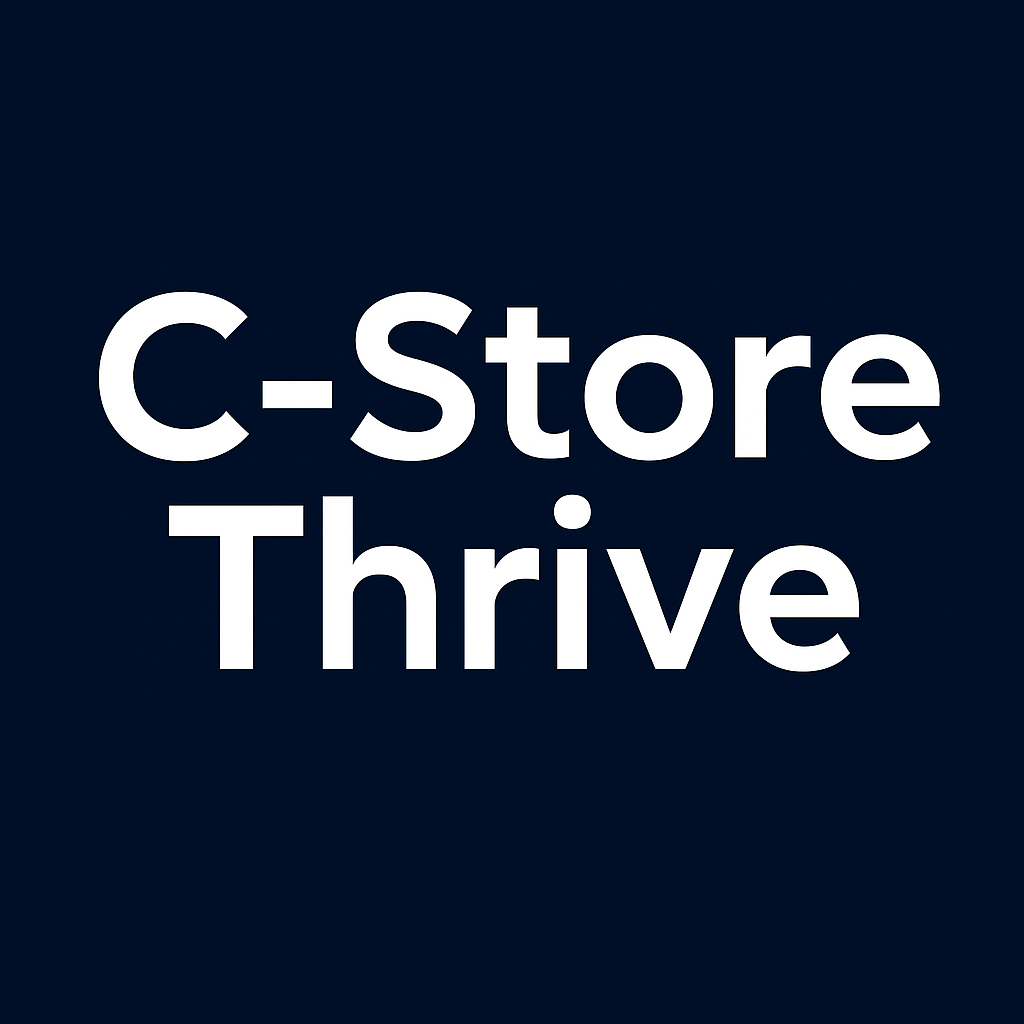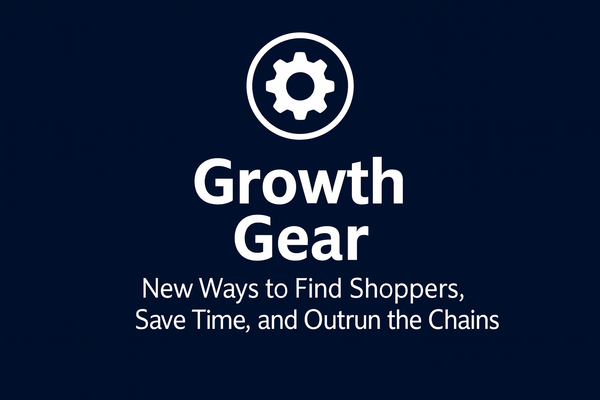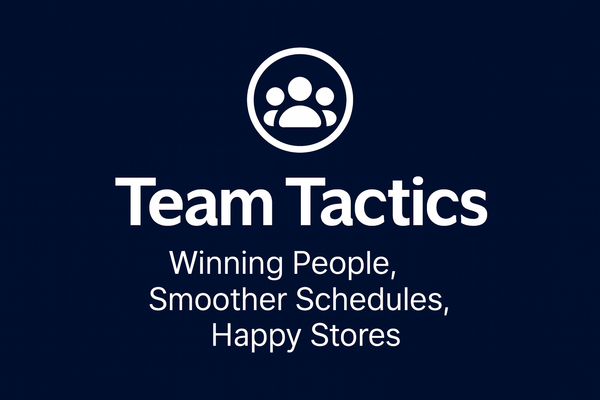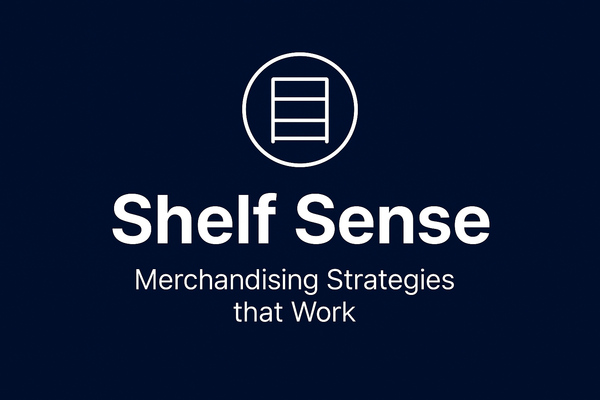Building Better from the Ground Up: The District Manager's Guide to Continuous Improvement Culture
When Rachel Martinez first became district manager for twelve Survival Stop locations, she thought her job was catching problems and fixing them. Store managers would call with issues; she'd swoop in with solutions, rinse, and repeat.

When Rachel Martinez first became district manager for twelve Survival Stop locations, she thought her job was catching problems and fixing them. Store managers would call with issues; she'd swoop in with solutions, rinse, and repeat. But after six months of playing whack-a-mole with recurring problems, she realized something was fundamentally broken with this approach.
"I was exhausted from constantly firefighting," Rachel admits. "Same issues kept popping up across different stores—inventory problems, customer complaints, staff turnover. I'd fix something at Store #47, then deal with the identical issue at Store #52 the next week. It hit me that I wasn't managing a district—I was managing chaos."
That's when Rachel discovered the power of continuous improvement culture. Instead of being the problem-solver-in-chief, she started building systems where frontline employees identified inefficiencies and developed solutions themselves. Two years later, her district leads the region in profitability, customer satisfaction, and employee retention. The secret? Getting everyone invested in making things better, not just waiting for someone else to fix what's broken.
Why Top-Down Problem Solving Fails
Traditional management approaches assume district managers have all the answers and frontline employees just follow orders. But in convenience stores, where customer interactions happen hundreds of times daily across multiple locations, this model breaks down fast.
Information gaps create major blind spots. District managers visit stores periodically, but they miss the subtle patterns that daily employees observe—which customers get frustrated with specific procedures, when systems slow down, how inventory flows could improve.
Solution delays kill momentum. By the time frontline issues filter up to district level, get analyzed, and solutions roll back down, problems have often worsened or evolved into bigger challenges.
Employee disengagement follows naturally when people feel their insights don't matter. Staff who notice inefficiencies but can't influence change often stop caring about improvement altogether.
"I used to think I needed to have all the answers," explains David Simpson, whose district transformation improved overall performance by 34%. "Turns out, the best answers were already in the stores—I just needed to create ways for them to surface and get implemented."
Building Psychological Safety: The Foundation
Before employees will suggest improvements, they need confidence that speaking up won't backfire. Creating psychological safety requires deliberate effort and consistent reinforcement.
Mistake tolerance signals that learning matters more than perfection. When employees fear punishment for admitting problems, they'll hide inefficiencies rather than fix them. Smart district managers celebrate honest mistakes that lead to systemic improvements.
Idea validation means taking employee suggestions seriously, even when they seem minor. Dismissing small improvement ideas kills future participation faster than anything else. Every suggestion deserves thoughtful consideration and explanation.
Credit sharing ensures employees get recognition for their contributions. When district managers take credit for employee-generated improvements, they destroy trust and motivation for future participation.
Eva Chilton learned this lesson when an employee suggested reorganizing the coffee station layout. "My first instinct was to explain why it wouldn't work," Eva recalls. "Instead, I asked her to test it for a week. Customer flow improved 15%, and now she brings me ideas constantly. That one moment taught me the power of saying 'let's try it' instead of 'that won't work.'"
The Suggestion Engine: Systems That Actually Work
Successful continuous improvement requires structured systems for capturing, evaluating, and implementing employee ideas. Informal "suggestion boxes" rarely work because they lack accountability and feedback loops.
Regular idea sessions create dedicated time for improvement discussions. Monthly store meetings where managers ask specific questions about inefficiencies generate more actionable suggestions than vague requests for "any ideas."
Digital platforms enable real-time idea submission and tracking. Simple apps or shared documents let employees submit suggestions immediately when they notice problems, preventing good ideas from getting forgotten.
Response commitments guarantee that every suggestion receives feedback within a specific timeframe. Even when ideas can't be implemented, explaining why maintains trust and encourages future participation.
"We implemented a simple shared document where employees could add improvement ideas anytime," explains Eric Cartwright, whose digital suggestion system generates 40+ actionable ideas monthly. "The key was committing to respond to every suggestion within 72 hours. Even rejected ideas get explanations, which often leads to refined suggestions that do work."
Microexperiments: Testing Ideas Without Risk
Many improvement ideas fail not because they're bad concepts but because they're implemented too broadly without testing. Smart district managers encourage small-scale experiments that prove concepts before company-wide rollouts.
Single-store pilots test ideas in controlled environments before district-wide implementation. One store can experiment with new procedures, layouts, or systems while others continue normal operations.
Time-limited trials reduce resistance by making changes temporary initially. Employees more readily accept "let's try this for two weeks" than permanent changes, even when trials often become permanent after proving successful.
Success metrics provide objective evaluation criteria for experiments. Clear measurement standards prevent bias and politics from influencing implementation decisions.
Jennifer Park's micro experiment approach illustrates the power: "An employee suggested changing our delivery schedule to avoid morning rush conflicts. Instead of changing all stores immediately, we tested it at two locations for three weeks. Results showed 22% faster transactions during peak hours, so we rolled it district-wide."
Recognition That Motivates Real Change
Effective recognition programs do more than celebrate good ideas—they reinforce the behaviors that generate continuous improvement while encouraging broader participation.
Public acknowledgment amplifies the impact of recognition by inspiring others to contribute. Sharing success stories across the district demonstrates that improvement ideas are valued and implemented.
Tangible rewards provide meaningful incentives for significant contributions. Whether through bonuses, extra time off, or career advancement opportunities, substantial improvements deserve substantial recognition.
Peer celebration leverages social dynamics to reinforce improvement culture. When employees see colleagues getting recognized for helpful suggestions, they're more likely to participate themselves.
"Our 'Improvement Champion' program recognizes the best monthly suggestion from each store," explains Amanda Foster, whose recognition system increased participation by 85%. "Winners get $100 bonuses and recognition in our district newsletter. But the real motivation comes from seeing their ideas actually get implemented and make everyone's job easier."
Training Managers to Lead Improvement
District-wide continuous improvement requires store managers who can facilitate rather than dictate change. Many managers need training to shift from command-and-control to collaborative leadership styles.
Active listening skills help managers draw out employee insights instead of immediately offering solutions. Learning to ask, "What do you think would work better?" generates more engagement than providing answers.
Experimentation mindset encourages managers to try employee suggestions rather than shooting them down. Training managers to say "Let's test that" instead of "That won't work" transforms store culture.
Implementation support ensures managers can execute good ideas quickly rather than getting bogged down in approval processes. Giving store managers authority to implement small improvements immediately maintains momentum.
"I had to retrain myself not to be the answer guy," admits Tom Wilson, whose management style evolution improved his store's suggestion implementation rate by 156%. "Now, when employees bring problems, I ask what they think might work. Half the time, their solutions are better than what I would've suggested."
Measuring What Matters
Continuous improvement culture requires metrics that track both participation and results. Traditional performance indicators often miss the cultural changes that drive long-term success.
Suggestion frequency measures employee engagement with improvement processes. Rising suggestion rates indicate growing confidence in the system while declining rates signal cultural problems.
Implementation rates track how often ideas get tested and adopted. High suggestion rates mean nothing if ideas never get implemented or tested fairly.
Performance improvements connect culture changes to business results. Tracking operational metrics like customer satisfaction, efficiency measures, and profitability validates the improvement program's value.
"We track suggestions per employee per month alongside traditional metrics like sales and customer scores," explains Pablo Silva, whose data-driven approach demonstrates clear ROI from culture investments. "The correlation between suggestion activity and store performance is undeniable—stores with active improvement cultures consistently outperform others."
Overcoming Resistance and Skepticism
Establishing continuous improvement culture faces predictable resistance from employees and managers accustomed to traditional hierarchies. Smart district managers anticipate and address these challenges systematically.
Skeptical managers often resist giving up control or fear their authority will be undermined. Demonstrating how facilitative leadership actually increases influence and reduces stress helps overcome this resistance.
Cynical employees may have experienced failed improvement programs in the past. Proving commitment through consistent implementation and recognition gradually rebuilds trust and participation.
Resource constraints can limit implementation of good ideas. Having budget allocation specifically for employee-suggested improvements shows serious commitment to the culture change.
"My biggest challenge was convincing long-term managers that involving employees in improvement wouldn't undermine their authority," recalls Earl Begay, whose district transformation took eighteen months. "Once they saw how much easier their jobs became when employees were actively solving problems, resistance disappeared."
Scaling Success Across Multiple Locations
What works at one store doesn't automatically translate to others, but successful district managers develop systems for sharing and adapting improvements across their territories.
Best practice sharing spreads successful experiments from pilot stores to the broader district. Regular communication about what's working where helps all locations benefit from collective learning.
Adaptation guidelines help stores modify successful ideas to fit their unique circumstances. Cookie-cutter implementations often fail because local conditions vary, but adaptable principles transfer well.
Cross-store collaboration encourages employees from different locations to learn from each other. Store visits, idea exchanges, and informal networks accelerate improvement adoption.
The Compound Effect of Small Changes
Individual improvements might seem minor, but their cumulative impact often surprises district managers who track results systematically. Small efficiency gains, customer service enhancements, and process improvements compound over time.
Operational efficiency improves gradually as multiple small changes eliminate friction points throughout daily operations. Faster transactions, smoother inventory processes, and better customer flow add up to significant productivity gains.
Employee satisfaction increases when people feel heard and empowered to improve their work environment. Higher job satisfaction reduces turnover and improves customer service quality.
Customer experience benefits from dozens of small improvements that individually might go unnoticed but collectively create superior service delivery.
"After two years of continuous improvement culture, our district's average transaction time dropped 18 seconds, customer satisfaction scores increased 31 points, and employee turnover fell by 47%," reports Sarah Williams. "No single change created these results—it was hundreds of small improvements suggested and implemented by our teams."
The Long Game: Sustaining Momentum
Building a continuous improvement culture isn't a one-time initiative—it requires ongoing commitment and evolution to maintain momentum and prevent backsliding.
Leadership consistency ensures that culture changes survive management transitions. Documenting processes and training replacement managers prevents cultural regression when personnel change.
Program evolution keeps improvement systems fresh and relevant. What works initially may need adjustment as culture matures and employee engagement deepens.
Success celebration maintains enthusiasm by regularly highlighting achievements and progress. Quarterly reviews of improvements and their impacts reinforce the value of ongoing participation.
The Bottom Line for District Managers
Creating continuous improvement culture transforms district management from reactive problem-solving to proactive capability building. Instead of managing crises, district managers guide systems that prevent problems while continuously enhancing performance.
"The best part about improvement culture isn't the individual suggestions—it's that people stop waiting for someone else to fix things," reflects Randy Walsh, whose cultural transformation earned him a regional promotion. "When employees at every level are actively making things better, your job as district manager becomes supporting success instead of managing failure."
For district managers willing to invest in cultural change, the returns extend far beyond operational improvements. Enhanced employee engagement, reduced management burden, improved customer satisfaction, and stronger financial performance create sustainable competitive advantages that benefit everyone involved.
In convenience retail, where small margins and intense competition demand operational excellence, the stores that continuously improve often become the stores that continuously win.





